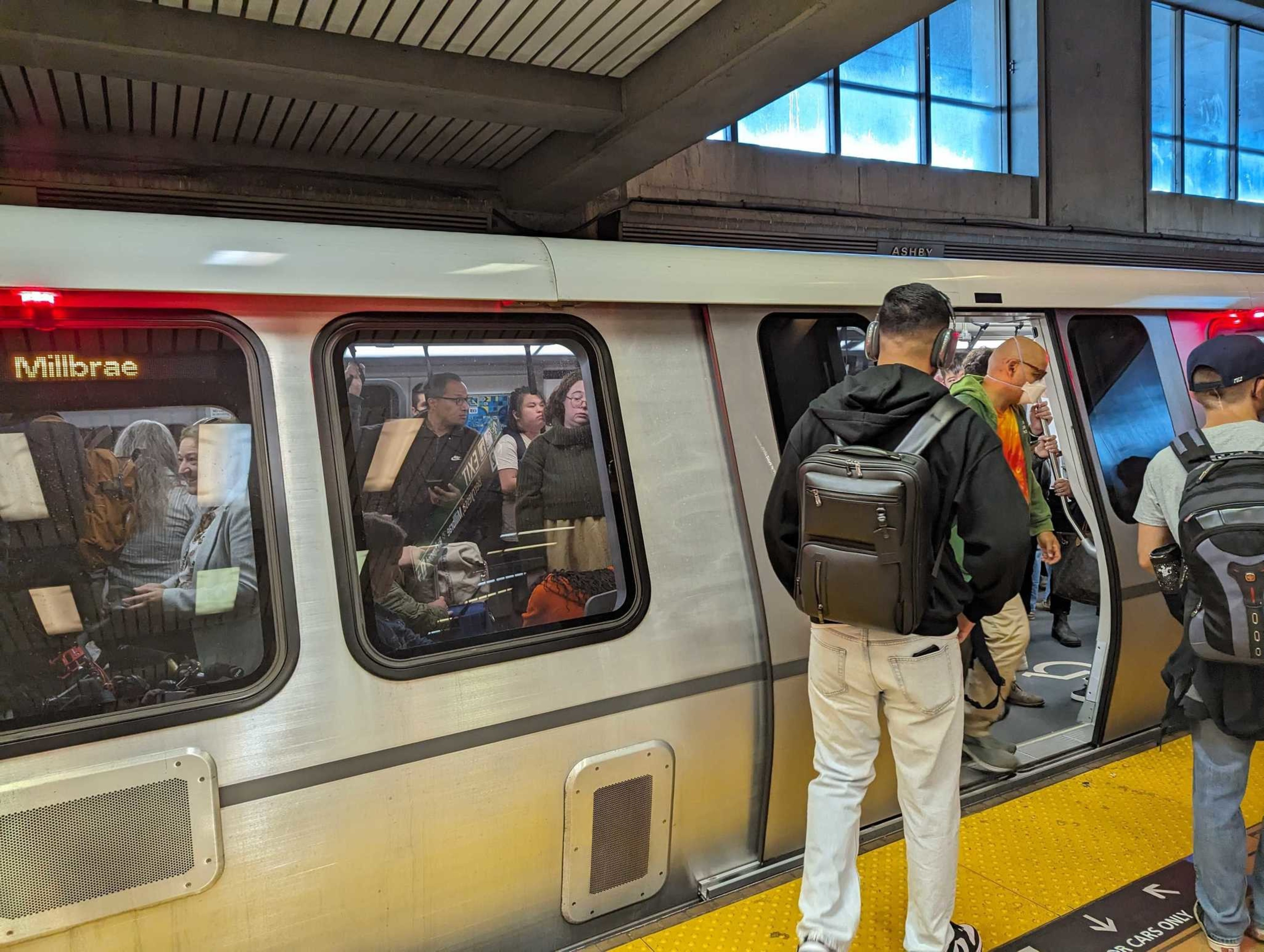BART has set new pandemic-era weekday ridership records for two months straight—and San Francisco’s Downtown stations are anchoring that increase, data obtained by The Standard shows. The revelation indicates more people are returning to the city center, where recovery has been slow to gain steam.
San Francisco’s four Downtown BART stations—Embarcadero, Montgomery Street, Powell Street and Civic Center—have shown the most dramatic recovery in the BART system since the early months of the pandemic. About 930,000 more people were logged exiting those four stations in September 2023 than in September 2020, according to BART data, marking a 290% percent increase. That means that the station exit increase at those four downtown stations accounts for about a third of the regional system’s entire ridership recovery across 50 stations.
The increasing number of people disembarking in Downtown San Francisco comes at the same time as many of the city’s tech companies are tossing their work-from-home policies in favor of hybrid models that bring workers in-person several days a week. Others have opted to drop Downtown leases altogether. At the same time, city leaders have aimed to revitalize Downtown by supporting pop-up shops (opens in new tab) and floating more ambitious concepts, like a soccer stadium replacing the San Francisco Centre mall.
Focusing on the past year, San Francisco’s Montgomery Street registered the largest year-over-year increase in people exiting the train at that station between September 2022 and September 2023. About 327,000 people disembarked at Montgomery Street in September 2023, a roughly 14,000 increase over September 2022. Embarcadero station had a nearly 9,000 person increase during that time period, ranking it at No. 3.
Overall, an average of over 172,000 paid riders exited BART stations each weekday in September 2023, capping two months of climbing ridership, according to BART data. That’s the largest total the agency has reported since April 2020, when the bottom fell out on transit ridership in the Bay Area and across the nation.
Last year, the highest average weekday total peaked at about 162,000, also in September, the data shows.
Meanwhile, the ridership surge has coincided with a Sept. 11 BART policy shakeup that scaled back the number of weekday departures and reduced the number of cars per train. The significant change boosted evening and weekend service and will make it easier for officials to patrol and clean the trains. But in return, weekday riders have been jostled back into crowded shoulder-to-shoulder commutes.

BART spokesperson Alicia Trost credited the September 2023 ridership high with the policy change, pointing to the increased service on the busiest line, the Yellow route, and more options for weekend and night riders. The Dreamforce Conference alongside several baseball games and popular concerts likely also helped, as well as a typical seasonal bump that comes in September, according to Trost.
“The steady climb is very encouraging,” Trost said.
Despite hitting this high point, BART ridership still pales in comparison to pre-pandemic figures. About 4.2 million people rode BART in September 2023. That’s less than half of the 9.9 million riders in September 2019.
“We don’t have an estimate when ridership may reach pre-pandemic levels as remote work has had a tremendous and lasting impact,” Trost said.
The station exit data shows that San Francisco isn’t the only downtown on the rebound. The 19th St. Oakland and 12th St. Oakland stops logged the second and fourth largest increase in the number of exits in the BART system.
There’s also signs that more people are beginning to travel to the less-frequented BART stops in the South Bay. Milpitas, North San Jose, Fremont and Union City had the largest percentage increase in station exits between September 2022 and 2023, all logging double-digit increases.
Meanwhile, after several years of skyrocketing ridership to the San Francisco International Airport and Oakland International Airport stops, both transit hubs saw a decrease in station exits between September 2022 and 2023. That may be due, in part, to the fact that the airport stops had already bounced back far closer to their pre-pandemic traffic than many other BART stations.
SFO’s roughly 103,500 exits in September 2023 reached two-thirds of the September 2019 figure for the station. The BART system as a whole, meanwhile, hit just 42% of its pre-pandemic ridership during that period.
